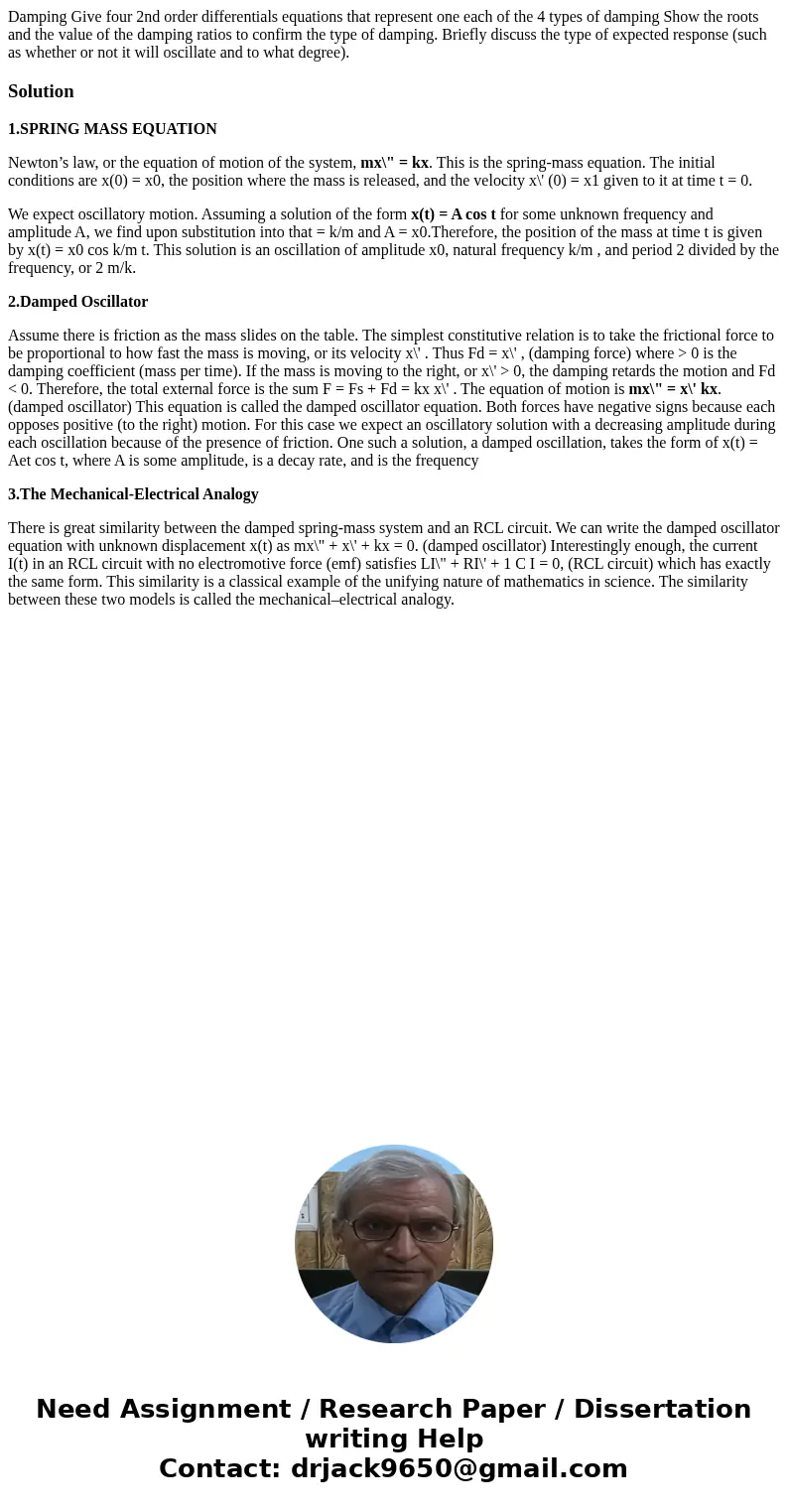Damping Give four 2nd order differentials equations that rep
Solution
1.SPRING MASS EQUATION
Newton’s law, or the equation of motion of the system, mx\" = kx. This is the spring-mass equation. The initial conditions are x(0) = x0, the position where the mass is released, and the velocity x\' (0) = x1 given to it at time t = 0.
We expect oscillatory motion. Assuming a solution of the form x(t) = A cos t for some unknown frequency and amplitude A, we find upon substitution into that = k/m and A = x0.Therefore, the position of the mass at time t is given by x(t) = x0 cos k/m t. This solution is an oscillation of amplitude x0, natural frequency k/m , and period 2 divided by the frequency, or 2 m/k.
2.Damped Oscillator
Assume there is friction as the mass slides on the table. The simplest constitutive relation is to take the frictional force to be proportional to how fast the mass is moving, or its velocity x\' . Thus Fd = x\' , (damping force) where > 0 is the damping coefficient (mass per time). If the mass is moving to the right, or x\' > 0, the damping retards the motion and Fd < 0. Therefore, the total external force is the sum F = Fs + Fd = kx x\' . The equation of motion is mx\" = x\' kx. (damped oscillator) This equation is called the damped oscillator equation. Both forces have negative signs because each opposes positive (to the right) motion. For this case we expect an oscillatory solution with a decreasing amplitude during each oscillation because of the presence of friction. One such a solution, a damped oscillation, takes the form of x(t) = Aet cos t, where A is some amplitude, is a decay rate, and is the frequency
3.The Mechanical-Electrical Analogy
There is great similarity between the damped spring-mass system and an RCL circuit. We can write the damped oscillator equation with unknown displacement x(t) as mx\" + x\' + kx = 0. (damped oscillator) Interestingly enough, the current I(t) in an RCL circuit with no electromotive force (emf) satisfies LI\" + RI\' + 1 C I = 0, (RCL circuit) which has exactly the same form. This similarity is a classical example of the unifying nature of mathematics in science. The similarity between these two models is called the mechanical–electrical analogy.

 Homework Sourse
Homework Sourse